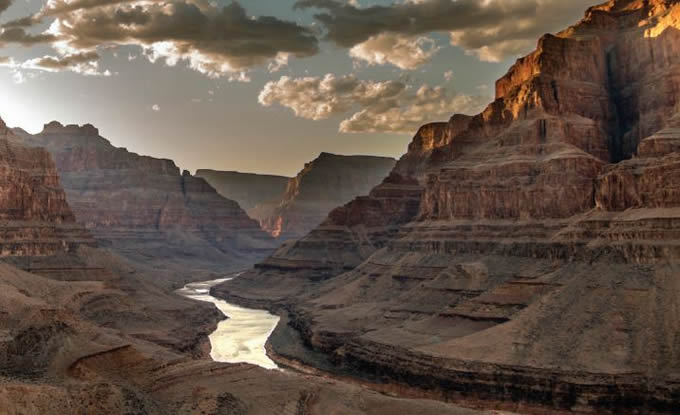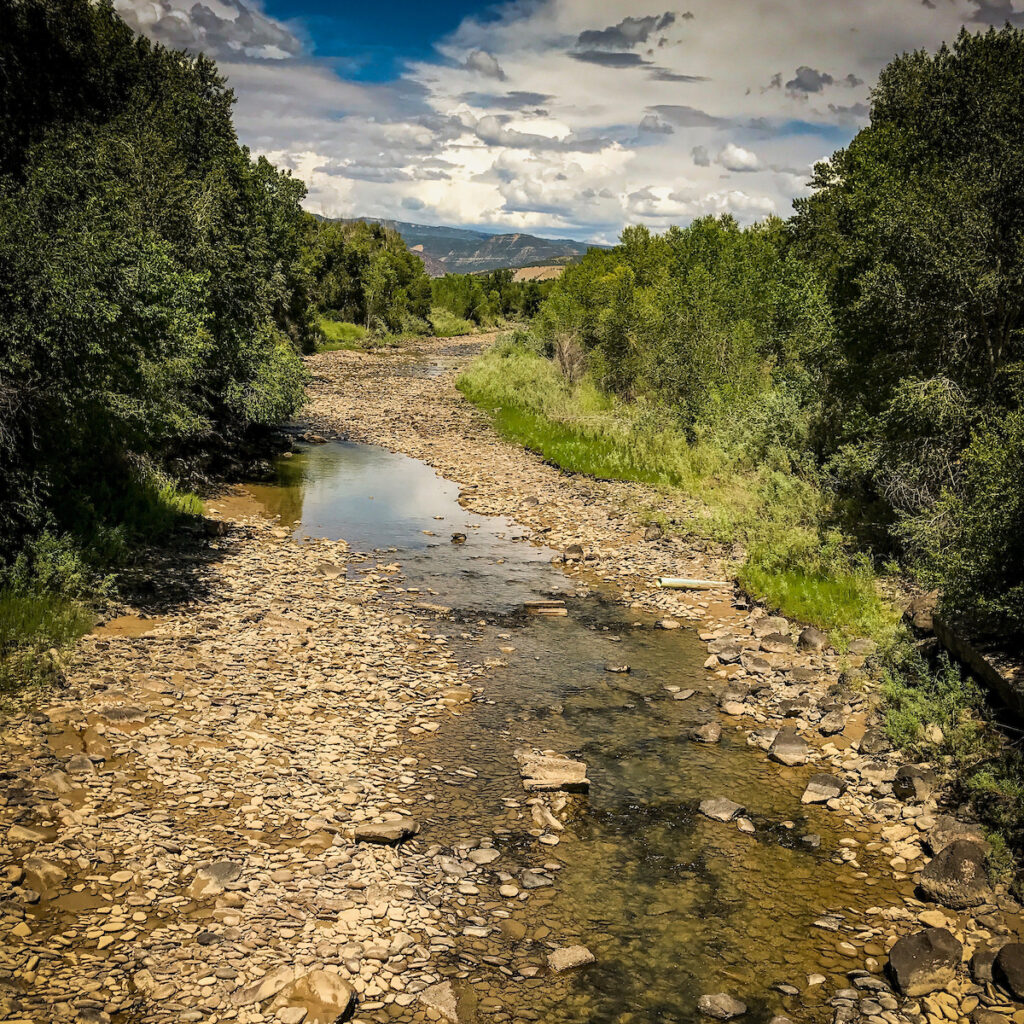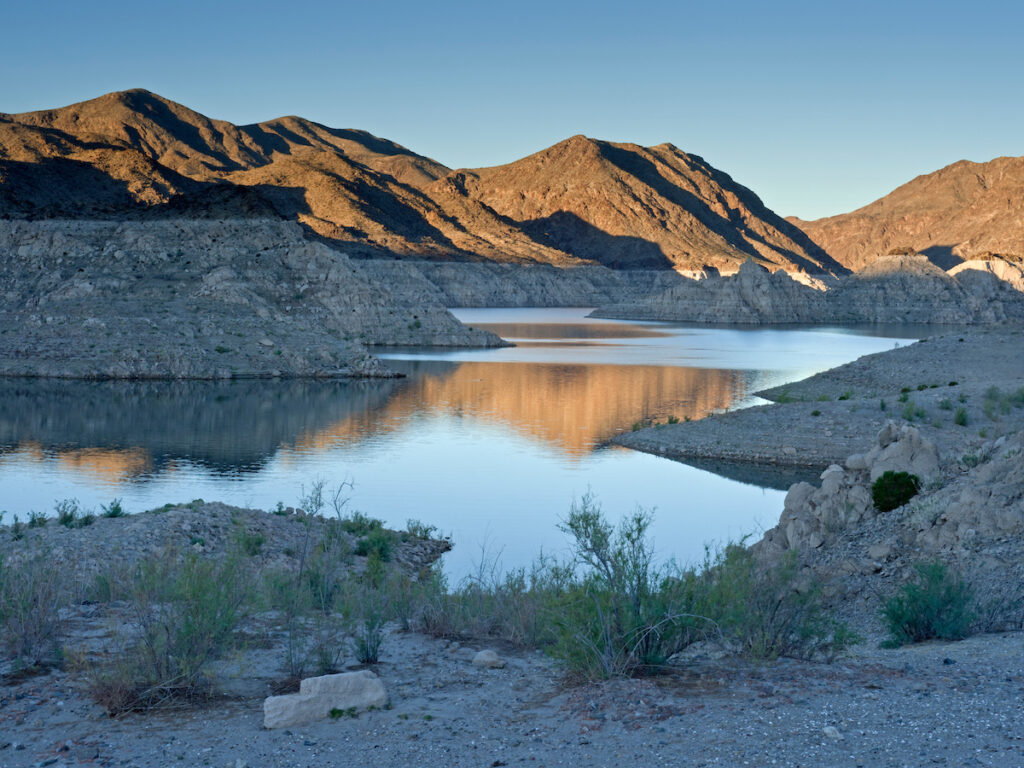report confronts tough choices for the future of the Colorado River
It's time for hard conversations about what kind of future we want for the Colorado River and all who depend upon it.

This blog was written by Sinjin Eberle & Page Buono
The Center for Colorado River Studies at Utah State University recently published a preprint edition of their new white paper titled, “Alternative Management Paradigms for the Future of the Colorado and Green Rivers.” The authors of the paper include Kevin Wheeler, Jack Schmidt, Brad Udall, and former Colorado River District General Manager, Eric Kuhn, among a few notable others in the climate modeling and Colorado River management space (Disclosure: Jack Schmidt and Eric Kuhn both serve voluntarily on American Rivers’ Science and Technical Advisory Committee.) The new publication builds upon a 2020 white paper, “Strategies for Managing the Colorado River in an Uncertain Future.” Wheeler et. al ran scenarios for various planning strategies on one of the most managed rivers in the world, the Colorado, to better understand the implications of those decisions in a hotter and drier future. Using the same computer modeling tools used by basin managers (the Bureau of Reclamation CRSS model), they integrated new climate and river flow data and looked out decades into the future to explore and predict water supply conditions under various scenarios.
The outcome of the study, in short: we’ve got to be more creative, and we need to have some hard conversations about what kind of future we want for the Colorado River and all who depend upon it. American Rivers has been engaged with the authors of the study, and we’re coming up to speed with its prescient findings. But even more important than that, our desire is to spark a conversation with you about what kind of future lies before us, what this new science tell us about various realities on the river, and how can we design solutions for the river, together.
John Fleck, author of a pair of recent books on western water, recently posted his take on the study, including some of the key highlights. He underscored that “Under a relatively optimistic scenario (things don’t get any drier than they’ve been in the first two decades of the 21st century), stabilizing the system would require:
- The Upper Basin to not increase its uses beyond its current ~4-million-acre feet per year of water use.
- The Lower Basin to adjust to routinely only getting ~6-million-acre feet of water.”

Basically, that means adapting to living in a 10-12 million-acre-foot (MAF) river, rather than a 17 MAF river as the Colorado River Compact assumes. Obviously, this stuck out to us too. While the Law of the River (the Colorado River Compact) essentially promised 7.5 MAF for the Upper Basin and 8.5 MAF for the Lower Basin (then added in Mexico’s allocation later), the Alternative Management Paradigms study makes clear that this is now an unattainable, and unwise, ambition.
Fleck points out that “Upper Basin water users have averaged about 4-million-acre feet/year since the 1980’s, but with plans to use more. The Lower Basin has reduced their use from the allowable 7.5 MAF to 6.9 MAF on average over the last five years. So to balance things out, Upper Basin use can’t grow, and Lower Basin use needs to shrink. More than it already has.”
The authors write that “the primary purpose of this White Paper is to provide provocative new ideas,” and they warn that “the current management approach that allows only incremental changes to the Law of the River may be insufficient to adapt to the future conditions of the basin.”
With both the warning and the desire for new ideas and thoughtful conversation in mind, we wanted to share some of the top conclusions from the study as an invitation for further conversation:
- The Colorado River has been profoundly altered from its highest reaches to its delta. In the highly constructed and managed basin—complete with numerous transbasin diversions and large dams—the native river ecosystem has been profoundly altered, the Upper Basin less so than the Lower, but still to significant degree.
- Unrealistic future depletion projections for the Upper Basin confound planning. There simply isn’t enough water to meet the aspirations for growth of the Upper Basin. “Unreasonable and unjustified estimations create the impression that compact delivery violations…are inevitable. Such distortions mislead the public about the magnitude of the impending water supply crisis and make identifying solutions to an already difficult problem even harder.”
- Climate change is causing flow declines and additional declines are likely to occur. 2000-2018 flows in the Colorado River are nearly 20% less than during the 20th century. Even accounting for this decline is not sufficient for future planning—increased temperatures and the resulting aridity will likely precipitate further decline.
- The Colorado River exists in a tenuous balance between supplies, demands and storage. Unplanned changes in this balance are likely to lead to highly undesirable outcomes. The Colorado River is already stretched. Any actions that decrease the inflows or increase demand are untenable. “If the Millennium Drought conditions continue and the 2007 UCRC future depletion projections materialize, the Colorado River’s water supply cannot be sustainably managed.”
- Likely lower inflows and/or any increases to Upper Basin consumptive uses will result in a difficult basin-wide reckoning. Future reductions in water supply are likely, due to the effects of climate change, exacerbating tensions between the Upper and Lower Basin, especially if the Upper Basin increases its demand. Negotiations are already massively difficult. Planning for a supply that science suggests will not be realized makes difficult processes profoundly more difficult.

In addition to those “difficult reckonings” it is clear that unless something is done, the environment—the river itself—has the most to lose. But in addition to those, the study outlined these additional takeaways that are key to understanding the expansive challenge facing the Colorado River:
- Lower Basin shortage triggers based on combined Lakes Powell and Mead storage are more logical and clearer than existing triggers (and different from simply looking at the individual lake levels on their own)
- Neither a Fill Mead First nor Fill Powell First scheme promotes or improves Lower Basin water security
- Flaming Gorge Reservoir releases provide little Upper and Lower Basin Risk Protection
- Humans have significant control over demands but little control over inflows
- Dire situations require solutions far from historic norms
As Kuhn, Fleck and others have stated for years, the study demands a reimagining of what we want versus what we need when it comes to water, and it grounds us in future-looking predictions of what we’re likely to have, which isn’t more and will likely be less. This is, perhaps, the epitome of inconvenient science, but it’s important science nonetheless, and if history has taught us anything, it is science that we can’t ignore. Doing so will cost us greatly.
You can read the study HERE, and you can learn more by staying engaged with us as we continue the work of distilling and contextualizing this research through additional blog posts, and other outreach, in the near future. We hope to catalyze a dialogue here—dare we say, a movement—and we look forward to your reactions, comments and ideas.




2 responses to “report confronts tough choices for the future of the Colorado River”
The problem is no one wants to hear the truth. The truth is, diversions from farmers, the irrigation use of ground water for crops and over consumption are the reasons the west is in such a drought. A near record snowpack didn’t even help the Colorado river outside of Colorado!! That should be the biggest concern for any state that relies on the Colorado River for their water supply.
I work with about sixty small businesses in the Central Rockies booking their recreational activities. This includes boating, fishing, and rafting, all dependent on summer runoff. All the Western slope activities all include rivers that are tributaries of the Colorado (Blue, Eagle, Yampa) or are using the Colorado itself. We are prey to the development on the Colorado Front Range and its need for water.
Any more diversions will adversely effect flows and the diversity of species in the rivers.
We need legislation out of the Colorado house and senate, to place common sense water-saving regulations for new construction to reduce water use as much as possible. Xeriscape with CO native plants rather than green lawns, low flush toilets, grey water collection for irrigation. We love folks joining us in CO to experience all that the high country has to offer them.
My rafting business partners have already survived droughts and fires, and now Covid 19. Water scarcity is another matter. Many raft companies have diversified their offerings, with zip lines, rock climbing, horseback riding etc., so as not to be so dependent on water. They survived one Covid summer, but I am not sure they can survive many lack-of-water summers. The seasons get shorter as the run-off is less and melts quicker, because of increased temperatures. This can result in too much water early season, and too little in the later season, essentially a double wammy on business levels. If the Front Range starts taking more water from a supply that is already scarce, it could be “lights” out for the CO rafting industry.
I will help in any way that I can. Particularly in representing many wonderful business partners. One thing that kept me going through the Pandemic, was helping my partners to survive, by booking them as much as I could. I feel the same way about water.
Thank you for all that you are doing on our behalf.